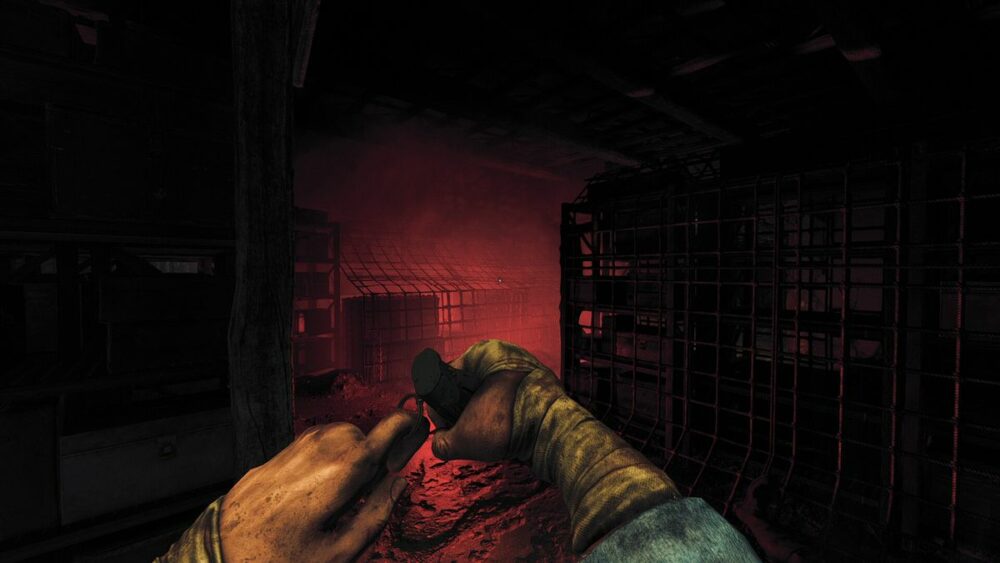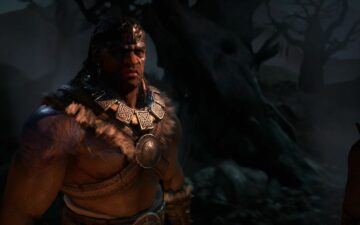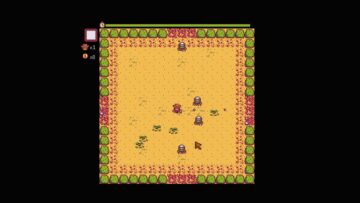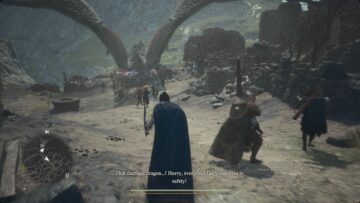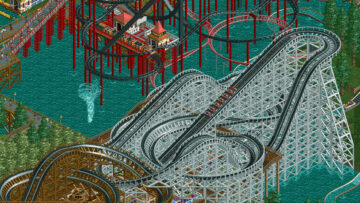In his book Vimy Ridge, British journalist and military historian Alexander McKee described how deafening sounds could be registered as touch. “I felt that if I lifted a finger I should touch a solid ceiling of sound,” he wrote about experiencing a bombardment during the Battle of Vimy Ridge in 1917. As recollected by professor Santanu Das at The Guardian, Wilfred Owen, the poet behind “Dulce et Decorum Est,” echoes a similar experience after three weeks at the Somme in 1916: “I have not seen any dead. I have done worse. In the dank air, I have perceived it, and in the darkness, felt.”
Amnesia: The Bunker, the latest first-person horror tale from Frictional Games, puts you in the muddy boots of a French soldier during World War I. In keeping with the Amnesia series’ previous games, as well as Frictional’s Penumbra and Soma, you’re forced to survive cat-and-mouse chases in ensnaring spaces. This time, however, the structure isn’t linear. The bunker is a labyrinthine nightmare, combining free-roam navigation with streamlined immersive-sim elements. Crucially, as in the innovative Alien: Isolation, a creature hunts you throughout the journey. All it takes is a miscalculation of time or a single wrong step to call its attention.
In The Bunker, sound is as harrowing as it is helpful, signaling danger before you turn a corner. You can hear growls and rumblings above your head and inside the walls, and in holes that only your predator can use — the better to ambush you. It took me hours to actually see the monster for the first time, and even then, it was a fleeting glimpse, in the moments before it swiftly killed me.
Systemically, The Bunker is structured around a safe room and a generator, which act as the central hub and starting point for roguelike-esque trips into the bowels of the concrete complex. The generator provides power to most rooms (after you manually turn the switches on), and tends to keep the signature monster at bay. But it burns fuel fast. As you desperately search for fuel cans, a stopwatch displays how long the lights will stay on, each needle tick underlying your decision-making process with a bed of general anxiety.
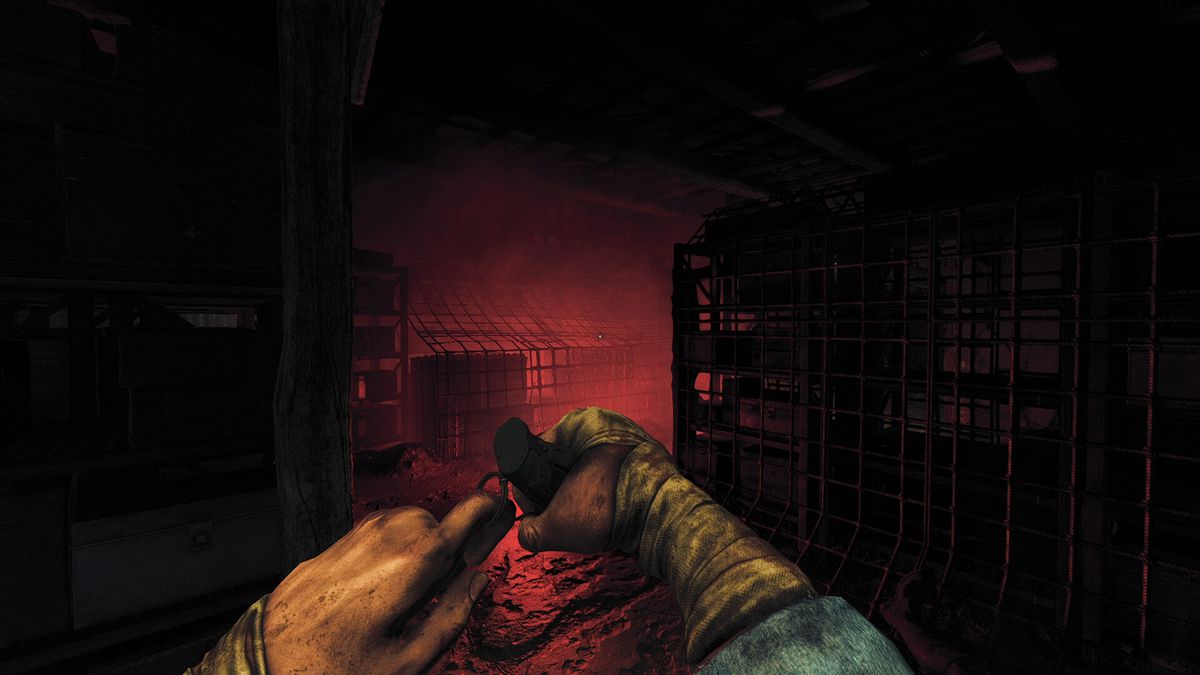
Some sections of the bunker sprawl across large subterranean areas, often plagued by rats and tripwires. Since you can only reference the map in designated safe rooms, it’s crucial to gather as much information as possible during each trip, memorizing layouts or, if you’re lucky, finding dog tags and notes from soldiers that hint at your next destination. Over time, I quickly learned that abandoning these expeditions halfway through them wasn’t always the best option — even if the alternate meant proceeding in complete darkness. There are only so many fuel cans to find, and wasting them to revisit places repeatedly means you’ll need to travel farther to get more, potentially losing light much earlier on in the process.
Ultimately, your goal is to find dynamite and clear the only escape route from the titular structure. But the gradual search takes time, and there’s minimal hand-holding past the tutorial. Furthermore, your limited inventory space forces you to make tough decisions about what to bring and what to leave behind. You can store essential items like the stopwatch in the safe room stash (if you’re OK not knowing exactly when the generator’s fuel will run out) in exchange for valuable crafting materials or progression-related tools.
There are pocket bags you can find to increase your inventory, but never enough that I felt truly and safely equipped for whatever was waiting ahead. After you’re cornered by the creature a few times, you’ll think twice before stashing the wrench (which unscrews vent covers to access otherwise locked rooms) or the lighter (a quieter light source that can also ignite fires and power a torch) on future trips. Surviving in The Bunker means constantly balancing the uses and drawbacks of every item.
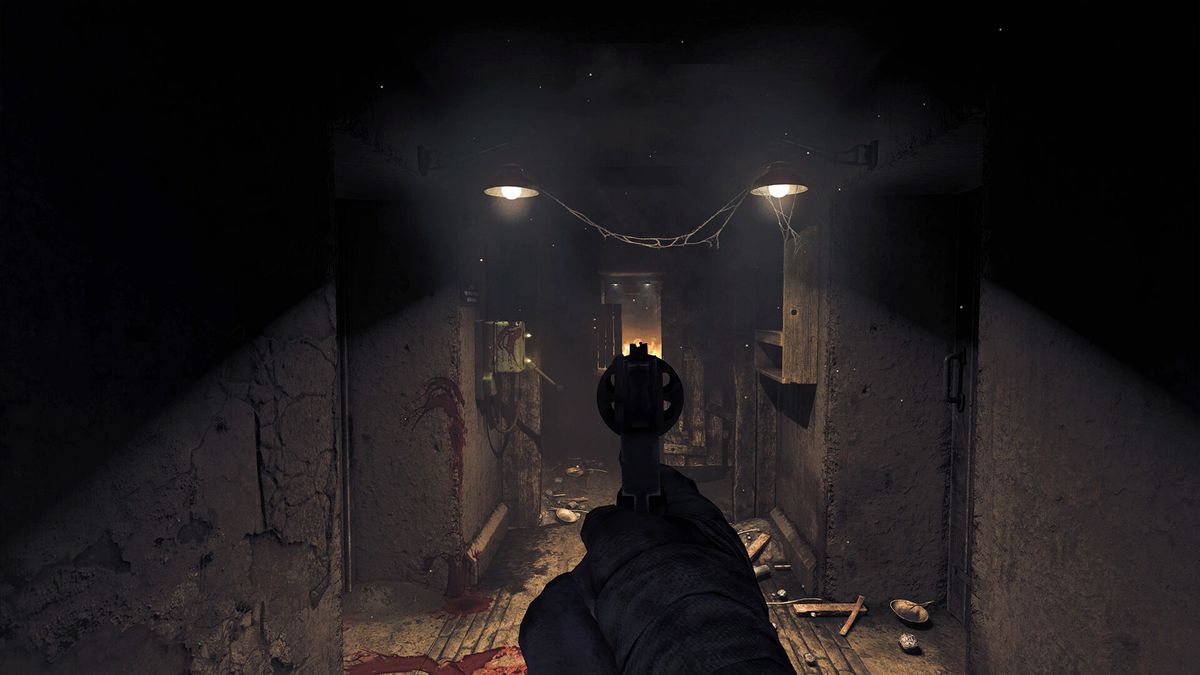
The mechanical flashlight is an infinite light source, and, theoretically, one of the most useful items in the game; but you need to loudly wind it to ensure extended illumination, and the monster is attracted to noise. Using grenades or your pistol is even more tense as a result of their resounding bangs. These risks are often necessary, though: Shooting a padlock or clearing up a corridor blocked by vermin can create crucial shortcuts for the inevitable backtracking. As defensive measures, directly attacking the monster only borrows time. Hurting it results in the creature fleeing momentarily, enough for a quick getaway. Once it returns, it’ll act more aggressively, while also gaining resilience against subsequent attacks. During an encounter, one bullet was enough to scare it off. In the next, the monster simply withstood the shot, and I ran out of the ammunition I had needed to double down.
These moments rival those of the best stealth games, when the slightest noise can mean revealing your position to much more powerful foes. Frictional has made a name for itself by creating these moments out of elegant yet terrifying systems. The Bunker’s standout achievement, then, is creating a nonlinear sandbox where you’re constantly learning from your own bad habits. I’ve never been so conscious of how much noise everything makes around me in a digital space, cautiously entering rooms to avoid kicking an empty wine bottle or activating the flashlight intermittently when I knew the monster was near. As McKee described, it’s your mundane actions, in conjunction with the crude and hostile setting, that create a solid ceiling of sound — one that only grows thicker the longer you inhabit the bunker.
Amnesia: The Bunker was released on June 6 on Windows PC, PlayStation 4, PlayStation 5, Xbox One, and Xbox Series X. The game was reviewed on Series X using a pre-release download code provided by Double Fine Productions. Vox Media has affiliate partnerships. These do not influence editorial content, though Vox Media may earn commissions for products purchased via affiliate links. You can find additional information about Polygon’s ethics policy here.
- SEO Powered Content & PR Distribution. Get Amplified Today.
- EVM Finance. Unified Interface for Decentralized Finance. Access Here.
- Quantum Media Group. IR/PR Amplified. Access Here.
- PlatoAiStream. Web3 Data Intelligence. Knowledge Amplified. Access Here.
- Source: https://www.polygon.com/reviews/23762290/amnesia-the-bunker-review-ps5-xbox-pc
- 1
- 220
- 28
- 7
- 8
- 9
- a
- About
- above
- access
- achievement
- across
- act
- actually
- Affiliate
- after
- Against
- ahead
- aims
- Alexander
- All
- also
- always
- ammunition
- Amnesia
- Amnesia: The Bunker
- an
- and
- Anxiety
- any
- ARE
- areas
- around
- as
- At
- attention
- attracted
- avoid
- bad
- bags
- balancing
- Battle
- Bay
- BE
- been
- before
- behind
- BEST
- Better
- blocked
- book
- Boots
- bring
- British
- burns
- but
- by
- call
- CAN
- central
- clear
- clearing
- code
- combining
- commissions
- complete
- complex
- conjunction
- conscious
- constantly
- content
- corner
- could
- covers
- crafting
- create
- Creating
- crucial
- Danger
- dead
- decisions
- defensive
- designated
- desperately
- digital
- directly
- do
- dog
- done
- double
- Double Down
- down
- download
- During
- each
- earlier
- Earn
- Editorial
- elements
- enough
- ensure
- entering
- equipped
- escape
- essential
- et
- ethics
- even
- Every
- everything
- evolution
- exchange
- experience
- experiencing
- FAST
- few
- find
- finding
- fine
- finger
- fires
- First
- first time
- For
- forced
- forces
- French
- Frictional Games
- from
- Fuel
- furthermore
- future
- gaining
- game
- Games
- Gaming
- gather
- General
- Generator
- Get
- glimpse
- goal
- grows
- had
- halfway
- has
- Have
- he
- head
- hear
- helpful
- his
- Horror
- hours
- How
- however
- http
- HTTPS
- hub
- i
- if
- Ignite
- in
- Increase
- inevitable
- influence
- information
- innovative
- INSIDE
- into
- inventory
- Is
- IT
- ITS
- itself
- journalist
- journey
- jpg
- june
- keep
- keeping
- large
- latest
- learned
- learning
- leave
- light
- like
- Limited
- links
- locked
- Long
- longer
- losing
- made
- make
- MAKES
- many
- map
- marks
- materials
- May
- mean
- means
- meant
- measures
- Media
- Military
- moments
- more
- most
- much
- name
- Navigation
- Near
- necessary
- need
- needed
- never
- New
- Newsletter
- Next
- Noise
- not
- notes
- of
- off
- often
- on
- once
- One
- only
- Option
- or
- otherwise
- out
- over
- own
- partnerships
- Past
- Patch
- patch notes
- PC
- perceived
- places
- plato
- plato data intelligence
- platodata
- platogaming
- playstation
- playstation 4
- playstation 5
- Point
- policy
- Polygon
- position
- possible
- potentially
- power
- powerful
- previous
- Process
- productions
- Products
- protagonist
- provided
- provides
- purchased
- quick
- quickly
- Rats
- registered
- released
- resilience
- resounding
- result
- Results
- returns
- revealing
- risks
- Rival
- room
- Rooms
- roundup
- Route
- Run
- safe
- safely
- sandbox
- Search
- see
- seen
- Series
- setting
- shooting
- shot
- should
- sights
- sign
- similar
- Simply
- since
- single
- So
- solid
- sound
- source
- Space
- spaces
- Starting
- Stash
- stay
- Stealth
- step
- store
- streamlined
- structure
- structured
- subsequent
- survive
- swiftly
- Systems
- takes
- tale
- that
- The
- The Game
- their
- Them
- then
- theoretically
- there
- These
- things
- think
- this
- those
- though
- three
- Through
- Throughout
- time
- times
- to
- To Leave
- took
- tools
- torch
- touch
- tough
- travel
- trip
- truly
- turn
- tutorial
- Twice
- underlying
- up
- use
- uses
- using
- valuable
- via
- W3
- waiting
- war
- was
- weekly
- weeks
- well
- What
- whatever
- when
- where
- while
- will
- wind
- windows
- Windows PC
- Wine
- with
- world
- worse
- Wrench
- wrong
- X
- xbox
- Xbox One
- xbox series
- Xbox Series X
- XML
- yet
- you
- your
- zephyrnet
